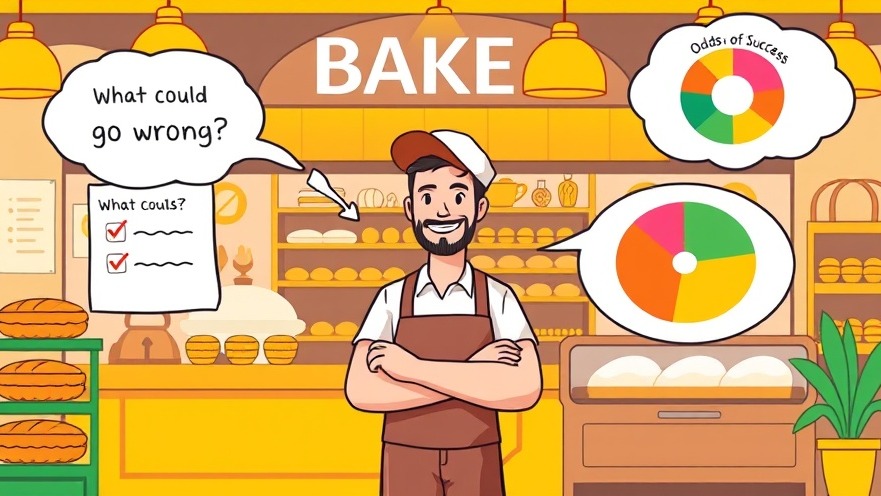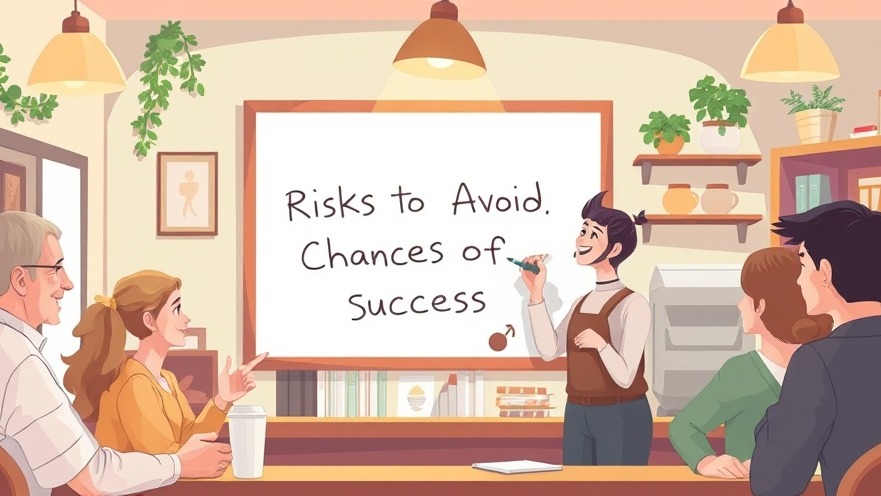What if the secret to growing your business wasn’t about chasing success, but dodging failure? Meet Alex, a bakery owner in Chicago who nearly lost everything when a new competitor opened nearby. Instead of panicking, Alex asked one powerful question: “What could make my business fail?” That question, paired with a smart way to weigh his odds, turned his bakery into the neighborhood’s favorite. By the end of this article, you’ll discover two thinking tricks—inversion and probabilistic thinking—that can help your business thrive, no matter the economy.
Key Takeaways
Learn how to spot risks before they sink your business.
Discover a way to make decisions that tilt luck in your favor.
Get inspired by real stories of businesses that used these tricks to win.
Find out how to take action and grow your business today.

What Is Inversion Thinking?
Inversion thinking is like looking at a problem backward. Instead of asking, “How can I succeed?” you ask, “What could make me fail?” This helps you spot dangers you might miss. For example, imagine you own a pet store. You want more customers. Instead of just advertising, you ask, “What would drive customers away?” Maybe it’s a messy store or rude staff. By fixing those, you keep customers coming back.
Think of inversion like checking your car before a road trip. You don’t just hope it runs—you check the tires, gas, and oil to avoid a breakdown. A 2023 study by Harvard Business Review found that businesses using inversion thinking were 30% less likely to face major setbacks.
Example: Lisa, a plumber in Austin, used inversion. She asked, “What would make a client never call me back?” She realized late arrivals and unclear pricing were risks. By setting firm schedules and transparent quotes, her bookings rose 20% in six months.
What Is Probabilistic Thinking?
Probabilistic thinking means guessing the odds of something happening. Instead of hoping for the best, you estimate what’s likely. For instance, if you run a coffee shop, you might think, “There’s a 70% chance a new menu will bring more customers, but a 30% chance it won’t.” This helps you plan smarter.
Picture flipping a coin. You can’t know if it’ll be heads, but you know there’s a 50% chance either way. In business, this mindset helps you prepare for surprises. A 2022 survey by Inc. Magazine showed that 65% of successful entrepreneurs use probabilistic thinking to make decisions.
Example: Mike, a gym owner in Seattle, wanted to offer yoga classes. He estimated a 60% chance they’d attract new clients, but a 40% chance they’d flop. He tested with a small class first, saving money. The classes worked, and his gym grew by 15% in three months.
Why These Tools Matter
Businesses fail when owners miss risks or make decisions blindly. Inversion spots those risks early, like a radar for trouble. Probabilistic thinking helps you bet on the right moves, like a chess player planning three steps ahead. Together, they cut your chances of failure and boost your wins.
Stat: According to a 2024 Small Business Administration report, 50% of small businesses fail within five years, often due to poor decision-making. Using inversion and probabilistic thinking can lower that risk by helping you plan better.
Example: A florist in Miami asked, “What would ruin my Valentine’s Day sales?” She spotted supply chain issues and ordered extra roses early. Her probabilistic guess—80% chance of high demand—paid off, earning her a 25% sales boost.
See How Digital Marketing All Can Drive More Traffic to Your Website
Want to take your business to the next level? Our team at Digital Marketing All can help you shine online and attract more customers. Here’s how:
Brand Voice Strategy: We’ll create a unique voice that draws in your ideal customers.
Market Growth Opp Research: We’ll find untapped opportunities to bring in more traffic.
Local SEO: Dominate your local market with proven SEO strategies.
Dominate Google: We’ll get your business to the top of Google search results.
Competitive Link Analysis: Learn what your competitors are doing and outsmart them.
Geo-Targeting: Find customers exactly where you want them.
Content Marketing: Our team crafts shareable content that attracts links and traffic.
Paid Media Advertising: Get clear results with pay-per-result strategies.
Blogging Services: We’ll write blogs that rank high and engage readers.
Search Box Optimization: Own the top keywords in your area.
Search Price Optimization: Control ad costs and boost ROI by avoiding price wars.
Marketing Consulting: Get tailored strategies to grow your brand.
AI Agent: A 24/7 sales agent customized for your business.
Business Coaching: One-on-one support to overcome any business challenge.
Book a Strategy Call: Ready to grow? Click here to schedule a free consultation!
How to Apply These Thinking Tricks
You don’t need a fancy degree to use inversion and probabilistic thinking. Here’s how to start today:
-
Step 1: Ask the Opposite Question
Think about your goal, then flip it. Want more clients? Ask, “What would make clients leave?” Write down every answer, like poor service or high prices. Fix those first.Example: A hair salon owner asked, “What would make a client hate their visit?” She found outdated styles were a problem, so she trained her team on modern trends, boosting bookings by 18%.
-
Step 2: Guess the Odds
For any big decision, estimate the chances of success or failure. Be honest. If you’re launching a new product, ask, “What’s the chance it’ll sell well?” Use numbers, like 60% or 80%. Then plan for both outcomes.Example: A pizza shop owner guessed a 70% chance a new delivery service would work. He started small, testing in one neighborhood. It succeeded, increasing sales by 22%.
-
Step 3: Act and Adjust
Use what you learn to make bold moves, but stay flexible. If something’s not working, tweak it based on your findings.Example: A dog groomer used inversion to spot a risk: clients didn’t know about her eco-friendly products. She added signs and a website page, raising inquiries by 12%.
Real-World Success Stories
Tina’s Café: Tina, a Denver coffee shop owner, used inversion to ask, “What would make customers skip my shop?” She found her slow service was a problem. By streamlining orders, she increased daily sales by 10%.
Jake’s Landscaping: Jake, in Phoenix, used probabilistic thinking to decide on a new ad campaign. He estimated a 50% chance of success but tested it with a small budget first. It worked, growing his client list by 15%.
Emma’s Bakery: Emma, in Boston, asked, “What would ruin my holiday orders?” She spotted delivery delays and partnered with a local courier, boosting on-time deliveries by 90%.
“The best way to achieve success is to first imagine failure and work backward to avoid it.” – Warren Buffett

Frequently Asked Questions
What is inversion thinking in business?
Inversion thinking means asking, “What could go wrong?” instead of just aiming for success. It helps you spot risks early, like fixing bad customer service before it hurts your business.
How does probabilistic thinking help small businesses?
It’s about guessing the odds of something working, like a new product having a 70% chance of selling. This helps you plan smarter and avoid big mistakes.
Can these thinking tricks help any business?
Yes! Whether you’re a plumber, café owner, or gym trainer, these tools help you make better decisions and grow faster.
How do I start using inversion thinking?
Pick a goal, like getting more customers. Ask, “What would make this fail?” List the risks and fix them one by one.
Why do businesses fail even with good ideas?
A 2024 study found 50% of businesses fail due to poor planning. Inversion and probabilistic thinking help you spot risks and plan better.
You’ve just unlocked two powerful ways to make your business unstoppable. Imagine Alex, the bakery owner, who turned his struggling shop into a local legend by asking the right questions and weighing his odds. You can do the same. Don’t let risks sneak up on you—start thinking backward and planning smarter today. Ready to take your business to the next level? My team can help you dominate your market with proven strategies. I hope you enjoyed reading this blog post. If you want to be our next success story, have my team do your marketing. Click here to book a call!
 Add Row
Add Row  Add
Add 








Write A Comment